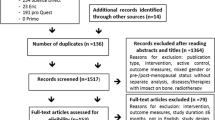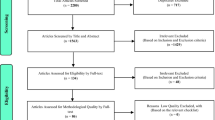Abstract
While studies suggest that socioeconomic position (SEP) influences bone health and risk of osteoporotic fracture in postmenopausal women, few studies have simultaneously examined gender and menopause differences as they relate to SEP and bone health. Here, we investigated the relationship between SEP and bone mineral density (BMD) among Korean men, premenopausal women, and postmenopausal women using the BMD data set (n = 9,995) of the Korean National Health and Nutrition Examination Survey IV. The relationship between SEP and BMD was estimated using analysis of covariance (ANCOVA); adjustments were made for age and body mass index (BMI) in the multivariate models. The relationship between SEP and osteoporosis prevalence was estimated using logistic regression. Relative index of inequality (RII) in osteoporosis was estimated using log-binomial regression. ANCOVA (adjusted for age and for age plus BMI) showed a significant positive association between SEP and BMD among men and postmenopausal women. Logistic regression showed a significant negative association between SEP and osteoporosis prevalence among men and postmenopausal women but not in premenopausal women. The RII, estimated by log-binomial regression, showed the impact of SEP on osteoporosis to be significant in men and postmenopausal women (p < 0.05) but not in premenopausal women. Overall, low SEP was associated with both low BMD and high risk of osteoporosis among men and postmenopausal women. Efforts to reduce the economic burden of morbidity and mortality from osteoporosis should target men and postmenopausal women with low SEP.
Access this article
We’re sorry, something doesn't seem to be working properly.
Please try refreshing the page. If that doesn't work, please contact support so we can address the problem.

Similar content being viewed by others
References
Yoo S, Cho HJ, Khang YH (2010) General and abdominal obesity in South Korea, 1998–2007: gender and socioeconomic differences. Prev Med 51:460–465
Woo J, Leung SS, Ho SC, Sham A, Lam TH, Janus ED (1999) Influence of educational level and marital status on dietary intake, obesity and other cardiovascular risk factors in a Hong Kong Chinese population. Eur J Clin Nutr 53:461–467
Brennan SL, Henry MJ, Wluka AE, Nicholson GC, Kotowicz MA, Pasco JA (2010) Socioeconomic status and bone mineral density in a population-based sample of men. Bone 46:993–999
Brennan SL, Pasco JA, Urquhart DM, Oldenburg B, Wang Y, Wluka AE (2011) Association between socioeconomic status and bone mineral density in adults: a systematic review. Osteoporos Int 22:517–527
Crandall CJ, Miller-Martinez D, Greendale GA, Binkley N, Seeman TE, Karlamangla AS (2011) Socioeconomic status, race, and bone turnover in the Midlife in the US Study. Osteoporos Int. doi:10.1007/s00198-011-1736-5
Ho SC, Chen YM, Woo JL (2005) Educational level and osteoporosis risk in postmenopausal Chinese women. Am J Epidemiol 161:680–690
Wang S, Lin S, Zhou Y, Wang Z (2008) Social and behavior factors related to aged Chinese women with osteoporosis. Gynecol Endocrinol 24:538–545
Wilson RT, Chase GA, Chrischilles EA, Wallace RB (2006) Hip fracture risk among community-dwelling elderly people in the United States: a prospective study of physical, cognitive, and socioeconomic indicators. Am J Public Health 96:1210–1218
International Osteoporosis Foundation (2009) The Asian audit: epidemiology, costs and burden of osteoporosis in Asia 2009. International Osteoporosis Foundation, Nyon
Kim YI, Park JH, Lee JS, Kim JW, Yang SO, Jeon DJ, Kim MC, Jeong TH, Lee YG, Rhee BD (2002) Prevalence and risk factors of the osteoporosis of perimenopausal women in the community population [in Korean]. Korean J Med 62:11–24
Melton L (1990) Epidemiology of osteoporosis: prediction who is at risk. Ann N Y Acad Sci 592:295–306
Korea Center for Disease Control and Prevention (2011) Korea National health and nutrition examination survey. http://knhanes.cdc.go.kr/. Accessed 16 Feb 2012
Orimo H, Hayashi Y, Fukunaga M, Sone T, Fujiwara S, Shiraki M, Kushida K, Miyamoto S, Soen S, Nishimura J, Oh-Hashi Y, Hosoi T, Gorai I, Tanaka H, Igai T, Kishimoto H (2001) Diagnostic criteria for primary osteoporosis: year 2000 revision. J Bone Miner Metab 19:331–337
Spiegelman D, Hertzmark E (2005) Easy SAS calculations for risk or prevalence ratios and differences. Am J Epidemiol 162:199–200
Mackenbach JP, Kunst AE (1997) Measuring the magnitude of socio-economic inequalities in health: an overview of available measures illustrated with two examples from Europe. Soc Sci Med 44:757–771
Khang YH, Yun SC, Lynch JW (2008) Monitoring trends in socioeconomic health inequalities: it matters how you measure. BMC Public Health 8:66
Colon-Emeric CS, Biggs DP, Schenck AP, Lyles KW (2003) Risk factors for hip fracture in skilled nursing facilities: Who should be evaluated? Osteoporos Int 14:484–489
Mullen PD, Simons-Morton DG, Ramirez G, Frankowski RF, Green LW, Mains DA (1997) A meta-analysis of trials evaluating patient education and counseling for three groups of preventive health behaviors. Patient Educ Couns 32:157–173
Arabi A, Nabulsi M, Maalouf J, Choucair M, Khalife H, Vieth R, El-Hajj Fuleihan G (2004) Bone mineral density by age, gender, pubertal stages, and socioeconomic status in healthy Lebanese children and adolescents. Bone 35:1169–1179
Neville CE, Robson PJ, Murray LJ, Strain JJ, Twisk J, Gallagher AM, McGuinness M, Cran GW, Ralston SH, Boreham CA (2002) The effect of nutrient intake on bone mineral status in young adults: the Northern Ireland Young Hearts Project. Calcif Tissue Int 70:89–98
Berkman LF (1984) Assessing the physical health effects of social networks and social support. Annu Rev Public Health 5:413–432
Wang MC, Dixon LB (2006) Socioeconomic influences on bone health in postmenopausal women: findings from NHANES III, 1988–1994. Osteoporos Int 17:91–98
Navarro MC, Sosa M, Saavedra P, Lainez P, Marrero M, Torres M, Medina CD (2009) Poverty is a risk factor for osteoporotic fractures. Osteoporos Int 20:393–398
Nabipour I, Cumming R, Handelsman DJ, Litchfield M, Naganathan V, Waite L, Creasey H, Janu M, Le Couteur D, Sambrook PN, Seibel MJ (2011) Socioeconomic status and bone health in community-dwelling older men: the CHAMP Study. Osteoporos Int 22:1343–1353
Elliot JR, Gilchrist NL, Wells JE (1996) The effect of socioeconomic status on bone density in a male Caucasian population. Bone 18:371–373
Jarvinen TL, Kannus P, Sievanen H (2003) Estrogen and bone—a reproductive and locomotive perspective. J Bone Miner Res 18:1921–1931
Suzuki T (2001) Risk factors for osteoporosis in Asia. J Bone Miner Metab 19:133–141
Gur A, Sarac AJ, Nas K, Cevik R (2004) The relationship between educational level and bone mineral density in postmenopausal women. BMC Fam Pract 5:18
Varenna M, Binelli L, Zucchi F, Ghiringhelli D, Gallazzi M, Sinigaglia L (1999) Prevalence of osteoporosis by educational level in a cohort of postmenopausal women. Osteoporos Int 9:236–241
Author information
Authors and Affiliations
Corresponding author
Additional information
The authors have stated that they have no conflict of interest.
Rights and permissions
About this article
Cite this article
Myong, JP., Kim, HR., Choi, S.E. et al. The Effect of Socioeconomic Position on Bone Health Among Koreans by Gender and Menopausal Status. Calcif Tissue Int 90, 488–495 (2012). https://doi.org/10.1007/s00223-012-9597-2
Received:
Accepted:
Published:
Issue Date:
DOI: https://doi.org/10.1007/s00223-012-9597-2




